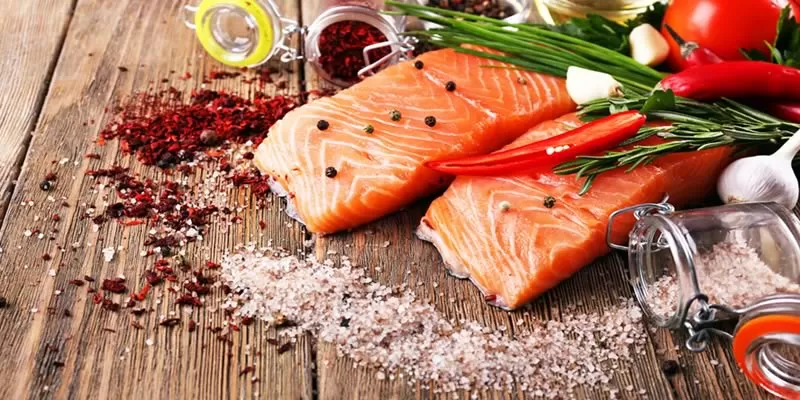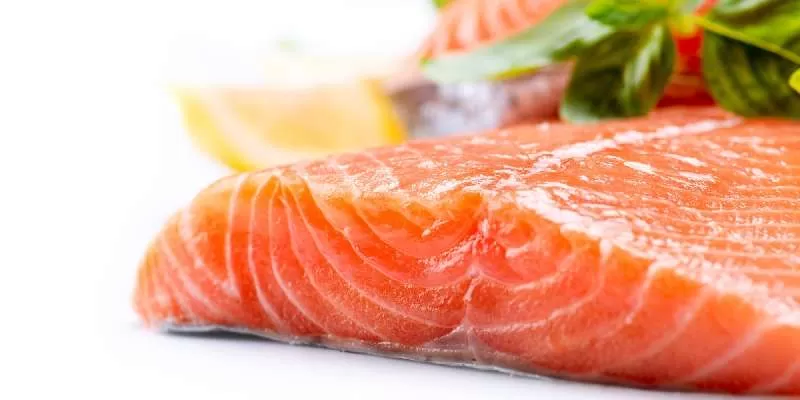
Compare chum salmon and pink salmon
Red fish is not only a delicacy, but also a very useful product. It contains a huge amount of vitamins, fatty acids, trace elements and other important nutrients. However, «red fish» is a common name for a huge number of salmon varieties.
So, salmon, pink salmon, sockeye salmon, salmon, chum salmon, trout and many other varieties can be called “red fish”. And they are quite different from each other. In addition to chum salmon and pink salmon, they are very similar and often “replace” each other on store shelves.
Therefore, the housewives may have a reasonable question: «What is better and more useful — chum salmon or pink salmon?». Let’s take a look at this material.
Keta

Keta is a large Pacific salmon. For habitat, she chooses cold waters and does not breed in captivity, so she is practically not caught in EU. Chum salmon are mined in Alaska, from where they are transported all over the world in fresh-frozen form.
The size of the chum salmon is a record even in the family of salmon fish. It grows up to 1.5 meters in length and can weigh up to 15 kilograms. Actually, the large dimensions of the chum salmon, combined with excellent nutritional qualities, make the chum salmon a valuable commercial fish.
In general, keta is characterized by the following features:
-
Bright pink color of meat, which is especially noticeable in fresh and lightly salted fillets. During heat treatment, the saturation of the shade is slightly lost, but the taste is preserved;
-
Subtle, inconspicuous aroma, which is quite difficult to feel;
-
Dry, fat-free texture. Thanks to this, the salmon fillet is perfect for cooking steaks and heat treatment — the fish retains its shape both when fried and boiled, even in relatively small pieces. However, like other red breeds, the texture of the meat is tender and melting regardless of the cooking method;
-
The calorie content of the chum salmon fillet is 125 kcal per 100 grams. Of course, it varies depending on the method of preparation. For example, when frying with oil (which is not recommended, because the original taste of the fish is lost), the calorie content increases.
-
The main advantage of chum salmon is a lot of vitamins in meat. So, it contains B5, B6, B9 and B12. In addition, chum salmon, like any other red fish, contains essential unsaturated fatty acids for the body, including Omega-3 and Omega-6.
So, let’s sum up.
Advantages
-
Rich in B vitamins;
-
Well suited for heat treatment, including frying in the form of steaks or steaming;
-
Only natural catch, because it is not found in captivity.
Flaws
- Almost never caught in EU, so the shelves are mostly imported.
When choosing chum salmon, it is advisable to buy fish from the autumn catch. It is tastier than caught in the spring.
caviar
Chum caviar is a valuable, delicacy product. It differs not only in excellent taste, but also visually very beautiful. Chum salmon caviar is large, bright red. The size of the eggs is about 4-5 mm, the shell is quite dense, so that they do not burst when cooking.
Chum caviar is characterized by a high protein content. Moreover, it is easily digestible, quickly digested and does not create a feeling of heaviness in the stomach. In addition, it contains many vitamins and other beneficial substances.
It is also worth noting that many people consider chum caviar to be more delicious than other salmon fish.
Pink salmon

Pink salmon is one of the most common and inexpensive salmon fish. It is caught in EU and is often grown on special farms. Therefore, the price for it is low, and you can find it in any grocery store.
Moreover, unlike other salmon fish, pink salmon is easily available in a variety of forms. You can easily buy her carcass, already decapitated and gutted, salmon, canned food, lightly salted and even steaks — “washers”. However, in the latter form, it is of little use. The fact is that pink salmon is a small fish. Usually it grows up to 70-80 centimeters and reaches a weight of up to 5-6 kilograms. Therefore, the “washer” steaks from it turn out to be too small.
In general, pink salmon is characterized as follows:
-
Pale pink meat. However, it is preserved during heat treatment and intensifies to a deep red when salted;
-
Delicate aroma in salty and fresh form, which is enhanced by boiling or frying;
-
Relatively fatty meat. However, it has a rather dense texture that some people may find dry. Especially strong «dryness» becomes noticeable after heat treatment, in which fish oil is smelted from meat. The taste is bright and rich;
-
The calorie content of pink salmon is up to 150 kcal per 100 grams. Of course, it increases with some forms of cooking (for example, frying with oil, which is not recommended). Slightly salted and steamed pink salmon may well be considered dietary dishes.
-
Pink salmon is very rich in trace elements. Its fillet contains iodine, manganese, chromium and fluorine in an easily digestible form. Pink salmon fish oil consists mainly of vital fatty acids, including Omega-3 and Omega-6.
So, let’s sum up.
Advantages
-
Low price and wide distribution — due to the fact that pink salmon is both caught and grown in EU;
-
A large number of vital fatty acids and trace elements;
-
Dense texture, which is preserved during heat treatment.
Flaws
-
Pink salmon meat may seem dry, especially after heat treatment, which involves rendering fat;
-
Relatively high calorie content — more than most other salmon fish.
You can distinguish where pink salmon was caught by the color of the abdomen. If it is white, it is an ocean fish. If yellowish or greenish, it is returned to fresh water. Pink salmon meat slightly differs in taste depending on the habitat, but it is worth determining the appropriate option based on your own impressions.
Pink salmon caviar
Pink salmon caviar has the lowest price. The size is medium (the diameter of the eggs is 3-4 millimeters). The color is more orange than red.
The taste of caviar largely depends on the quality of salting. By itself, it has a subtle, not too pronounced flavor and aroma bouquet. The eggs are distinguished by a rather dense shell that does not burst when cooking or decorating a dish.
Comparison
So, let’s compare these two types of salmon fish and determine which is better.
|
|
|
|
|
Spreading
|
Mainly caught in Alaska
|
Caught and raised in EU
|
|
Price
|
Medium
|
below average
|
|
Dimensions
|
Large, up to 150 cm
|
Medium, up to 70-80 cm
|
|
fillet color
|
Bright pink, fades when cooked
|
Pale pink, retained when cooked
|
|
Texture
|
Dryish
|
Dryish, dense, becomes denser and drier when cooked
|
|
Calories per 100 grams
|
Up to 120 kcal
|
Up to 150 kcal
|
|
Useful material
|
Omega 3, Omega 6, B vitamins
|
Omega-3, Omega-6, trace elements (iodine, manganese, chromium, fluorine)
|
|
Caviar
|
Large, bright red, rich in protein
|
Medium, orange, taste depends on the degree of salting
|
In general, pink salmon is a “red fish of general consumption”. The relatively low price and wide representation in stores make it accessible to everyone. But chum salmon, although considered somewhat tastier and more valuable, is a little less common and has a higher price.
Добавить комментарий
Для отправки комментария вам необходимо авторизоваться.